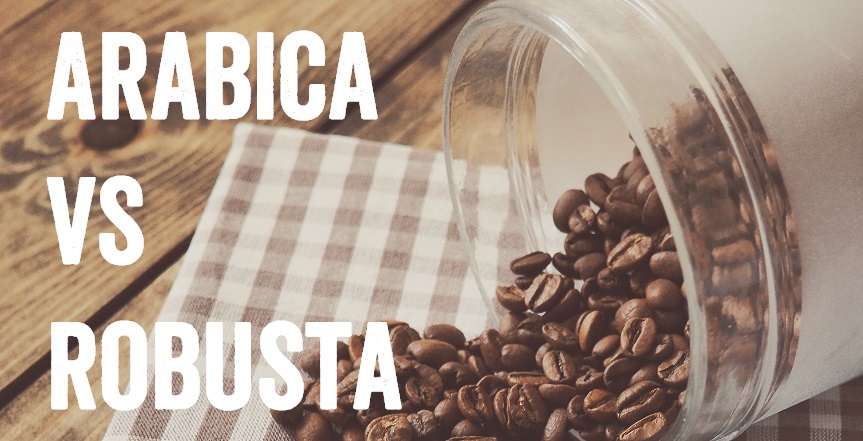
Our social media, website and coffee packaging all proudly claim that our coffee is “100% Arabica”, but what does this actually mean? The first step to becoming a conscious coffee consumer is understanding that all coffee is not created equal, and knowing that you can learn a lot about the beans you’re about to buy by doing a little bit of research!
Here are the top 5 differences between Arabica beans and Robusta beans, and how you, as a consumer, can spot them yourself!
- The Look of the Bean
Robusta beans tend to be darker brown in colour, and have a rounder shape. Arabica beans have the better-known oval shape with a lighter brown colour.
- The Cost
You guessed it – Robusta beans are less expensive. By the pound, they typically are worth about $0.70 USD, whereas Arabica beans go for roughly $1.14 (and more!).
- Caffeine Content
You might think that the more caffeine the bean contains the better, but this isn’t true. Robusta beans have almost double the caffeine content of Arabica beans at 2.7% (Arabica beans contain approx. 1.5%). The high caffeine content gives the beans a different flavour, which brings us to our next point –
- Taste
Caffeine has a bitter taste, so the higher caffeine content in Robusta coffees adds a bitterness to the flavour. Some people describe it as rubbery or burnt. If you’ve ever tasted instant coffee, that’s most likely Robusta beans that you’re drinking! Arabica, on the other hand, has a myriad of flavors, all identifiable on the SCAA Flavour Wheel
- Cultivation
Robusta beans are resistant to many pests and disease and can grow in almost any kind of soil. They grow at about 3,000ft above sea level or lower, which makes them much easier to harvest, as they can be machine-picked. Arabica plants are more sensitive, falling victim to many types of pests and disease. The beans are grown 3-6,000ft above sea level; therefore, Arabica beans are harvested by hand.
In Thailand, Robusta beans are far more common than Arabica, and until a few years ago, it was difficult to convince people that Thailand was producing quality Arabica beans. When you sip a cup of Doi Chaang, you can be sure that you’re tasting the finest quality beans, that were actually rated in the top 1% in the world!

